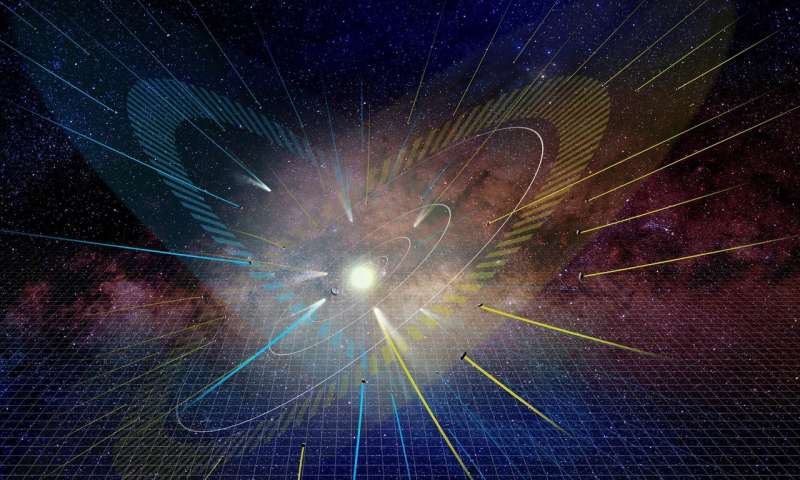HOME
Second alignment plane of solar system discovered

Artist’s impression of the distribution of long-period comets. The converging lines represent the paths of the comets. The ecliptic plane is shown in yellow and the empty ecliptic is shown in blue. The background grid represents the plane of the galactic disk. Credit: NAOJ
A study of comet motions indicates that the solar system has a second alignment plane. Analytical investigation of the orbits of long-period comets shows that the aphelia of the comets, the point where they are farthest from the Sun, tend to fall close to either the well-known ecliptic plane where the planets reside or a newly discovered "empty ecliptic." This has important implications for models of how comets originally formed in the solar system.
In the solar system, the planets and most other bodies move in roughly the same orbital plane, known as the ecliptic, but there are exceptions such as comets. Comets, especially long-period comets taking tens-of-thousands of years to complete each orbit, are not confined to the area near the ecliptic; they are seen coming and going in various directions.
Models of solar system formation suggest that even long-period comets originally formed near the ecliptic and were later scattered into the orbits observed today through gravitational interactions, most notably with the gas giant planets. But even with planetary scattering, the comet's aphelion, the point where it is farthest from the Sun, should remain near the ecliptic. Other external forces are needed to explain the observed distribution.
News Source